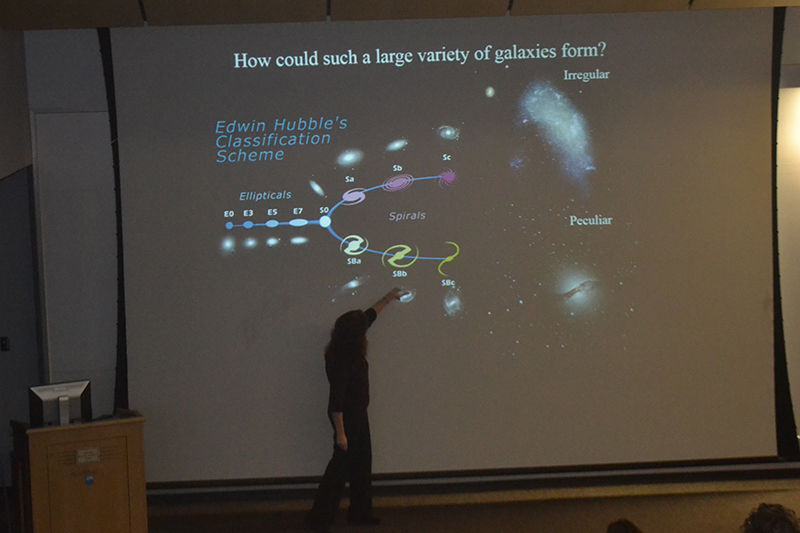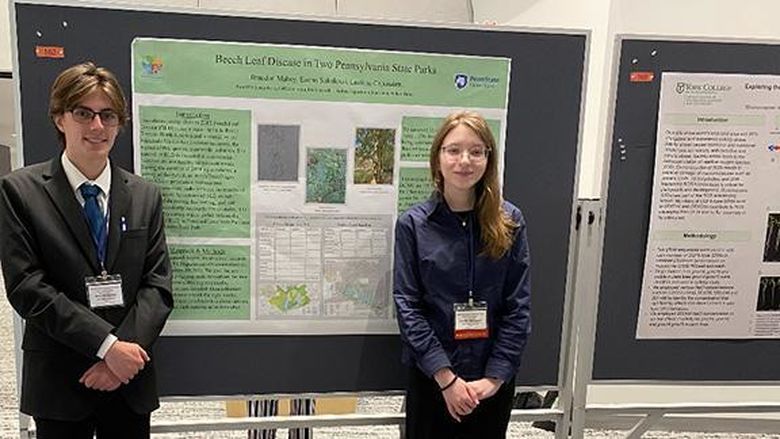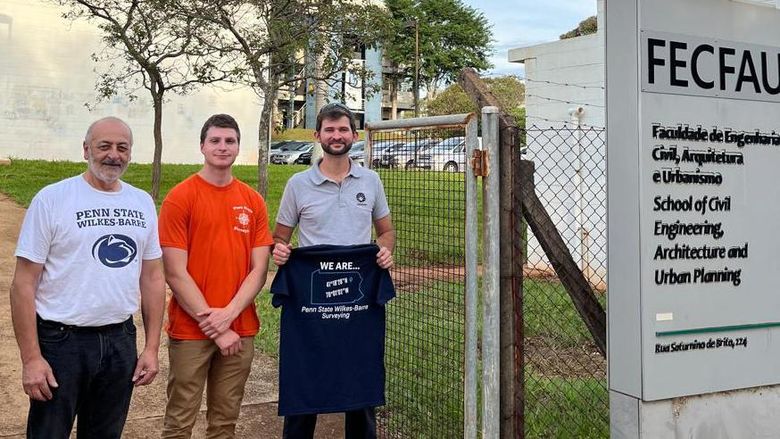
Dr. Violet Mager talks galaxies and more at the Spring Scholarly Lecture Series
On February 25th, Dr. Violet Mager kicked off the Penn State Wilkes-Barre Spring Scholarly Lecture Series sharing information on her research of galaxy types and their formation.
"Galaxies can look significantly different in different wavelengths of light, especially in the ultraviolet. This complicates galaxy formation and evolution studies where very distant galaxies observed as they were in the early history of the Universe are seen in the infrared, but originally emitted that light in the ultraviolet," explains Dr. Mager. "I study how the structure of galaxies change as a function of observed wavelength to determine a quantitative correction that can be applied to these distant galaxies."
Q: How did you get involved in your research?
A: When I was a kid I wanted to do something extreme. Either work with something very very tiny or very very big. So the tiny was that I was interested in nuclear physics, and the big would be the universe. One of the biggest things in the universe is galaxies, and so I ended up not going into nuclear and ended up going into astronomy. I chose galaxies because they are this very large extreme thing that are beautiful and interesting. When I went to graduate school at Arizona State University, I picked an adviser who was working on galaxies and he helped me chose this topic, so I've been expanding on it since then.
Q: What is the most rewarding part of your research?
A: I think the most rewarding part is when I'm working with students and getting them involved. Seeing them get the experience will help open doors for them in the future, and seeing their fascination about the subject.
Q: What are the toughest problems you have to deal with?
A: It always takes longer to do things then when you originally think it will. There are always problems and issues that pop up that you didn't initially think would exist, but they do. Everything always ends up being more complicated and takes more effort to do, and therefore more time. There are all these challenges, if some issue pops up; how do I deal with it? You have to think of new ways to approach the data in order to fix that unexpected problem.
Q: How do you see this field changing in the future?
A: The field of galaxy evolution and formation is on the brink of a lot of change right now
because of new telescopes, like the James Web space telescope, that are probably going to completely change our view of the universe. Right now when we look at these distant galaxies, they look so faint that they look like smudges. But with that, it might progress to where we might see some more structure. It will greatly expand our view and it's because of change in technology. Who knows, it might completely end up throwing out everything we knew. That happens in science when we are sure it's one way, then a new technology comes about and shows us we are completely wrong, so we have to rethink everything.





